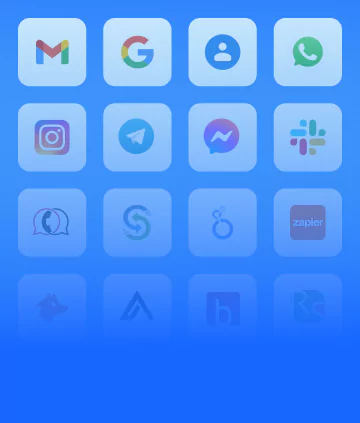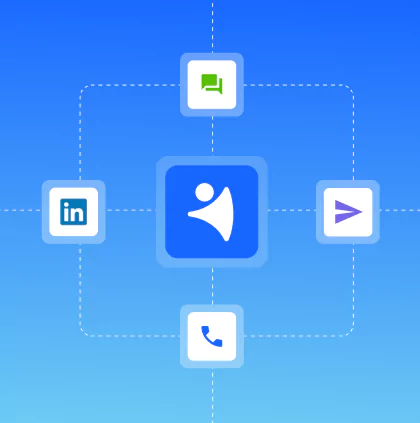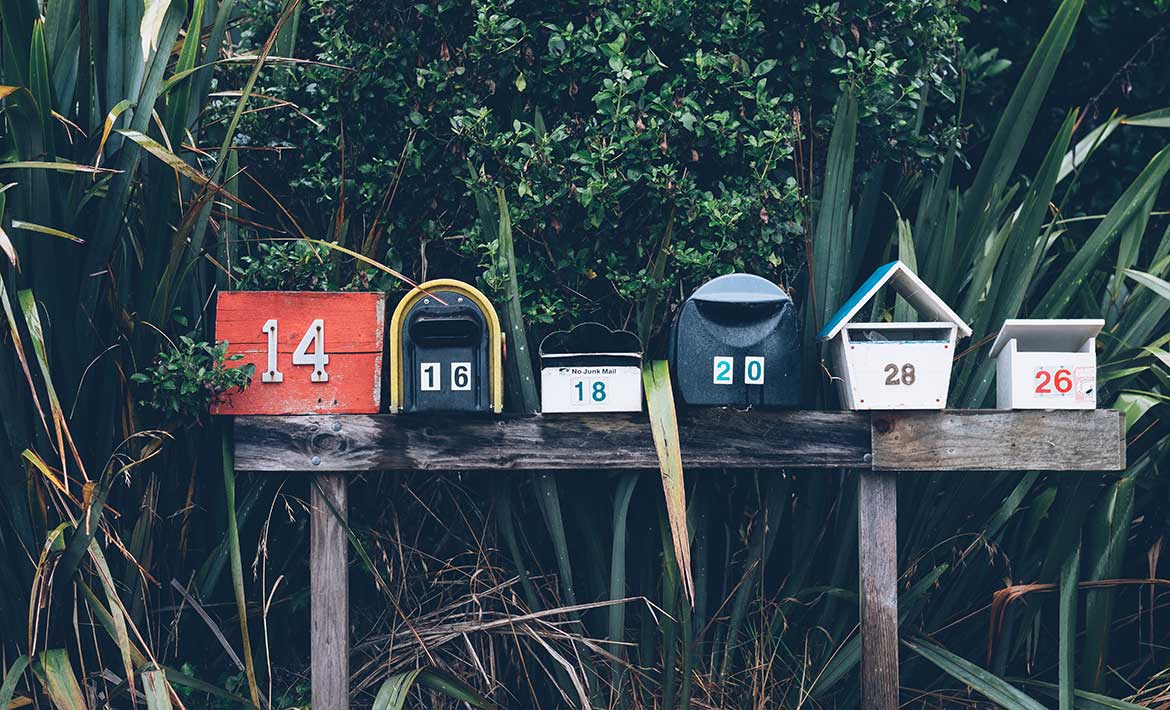Most people believe that Gmail is great as it is. It does what it says on the tin: simplified communication, message storage, and maybe the occasional Hangouts chat or call. Everything’s built in to save you time and energy. But if you’re a power user, where you have like five accounts and run your business through Gmail, your inbox can turn into a productivity killer.
Sifting through emails, determining what to do with them, and actually dealing with them eventually takes hours. The terrible truth is that once you stop, it takes about 23 minutes to get your focus back (Source: WSJ). You need to prevent this by keeping your inbox organized and uncluttered.
But hey, you don’t need to reinvent the wheel! NetHunt is always here to help you. We’ve gathered seven great tips for using emails effectively and staying on top of your inbox.
1. Select a Layout
We all like to prioritize things, and emails aren’t an exception. Selecting your preferred layout should be your first step to organizing your Gmail. Just click on the cog symbol in the upper right corner and select “Settings.” Then choose the “Inbox” tab and, from there, Gmail gives you five layout options for your inbox:
- Default: This is the standard format that organizes your Gmail by date. In this view, you can select different categories in which your emails are placed. They appear as tabs at the top of your screen and can be helpful in determining which of your emails are most likely to be more important.
- Important First: In this view, Gmail tries to predict which emails are most important and highlights them with a yellow marker, displaying those messages at the top of an inbox. Your less important messages are displayed in the lower inbox, towards the bottom of your screen.
- Unread First: This view is similar to the Important First option, however, the top of your inbox includes messages you haven’t opened yet, while the bottom of your inbox includes everything else.
- Starred First: The Starred First view also splits your inbox into two fields and displays only the emails you’ve starred in the top view. Everything else appears in the second view below.
- Priority Inbox: This is a combination of all of the views. Gmail uses predictive analysis to determine which emails you’re most likely to interact with based on past actions. It then puts those emails into the top view.
This simple, yet powerful feature copes with two tasks at once. It makes your inbox appearance look more orderly and never lets you miss an important email again.
2. Clean up your inbox using Advanced Search
Too obvious, right? You might say: “Great advice! But what should I do about everything that is already in my inbox?” about several years of communication and notifications backed up in your inbox. Manually going through emails one by one to see your inbox cleared doesn’t seem an improving-my-productivity action... But there’s a better way!
You evidently have plenty of unread or unarchived messages and want to clean them up. You’ll have to sort these messages first. As you haven’t touched those emails for months, they are probably unimportant or irrelevant to your current activities. Basically, you can delete or archive them without a second thought. Remove messages that are at least a month old, newer messages might be even more relevant. Doing this manually would be a chore, believe us. You should use Gmail advanced search, instead!
The search in Gmail is very flexible, allowing you to find all emails meeting the same criteria. You can find emails which you’ve received a month ago or earlier by entering “older_than:1m” in the search bar, where “1m” means one month (you could go with 2 just to be sure). Click the “Select” button (the one with a checkbox) and select “All”. This will select all the messages on the first page, but if you want to select all messages in the inbox, click on the “Select all conversations that match this search” on top of the search result. Now you can archive or delete every old message and keep your inbox clean.
NetHunt CRM tip: Advanced record search
NetHunt has a similar advanced search feature, complementing the search in Gmail. You can search through NetHunt CRM folders and records using the same Search bar. The search syntax is very similar, allowing you to find and filter records based on fields.
3. Touch It Once email management rule
How often do you open an email, read it, and… do nothing about it? This undoubtedly tops my email pain points list ?. You open your email, read it, you even carefully consider the answer in mind and then… something stops you and the email remains hanging in your inbox (sometimes forever!).
For such cases, there’s another useful email management rule known as “touch it once”. It means that once you’ve opened an email, you MUST do something about it, rather than waiting until later. Whatever you want, reply, archive, or delete it -- do something so it’s not cluttering up your inbox. If it’s a task that needs completing, you need to note it somewhere else (your to-do list, put a To-Do label on it, set a follow-up, etc), and then archive it.
As for the times you’ve replied to a message and need to archive them without having to do it manually, you can enable “Send and Archive” button in the General tab of the Settings and now, when replying to a conversation, a new “Send and Archive” button will appear next to the usual “Send” one.
4. Mark important messages with stars ⭐
One of the ways of remembering to get back to a certain email later is to mark it as unread, so you’ll check it later. Another more convenient option is to star a message. You can do so in one click and it’ll allow you to easily find and group those messages later. While it’s a good option, it still lacks some flexibility.
By default, Gmail allows you to set a single, yellow star, but you’re also allowed to enable more stars and other symbols for adding more order to your inbox. Go to Settings and, under the General tab, you can manage the available star and symbol options there.
But there are obvious downsides to Gmail stars: you’ll have to cycle through them all before you get to the one you want, and there’s no way to make Gmail sort by star color if you want an additional layer of organization.
NetHunt CRM tip: Use follow-ups
Follow-ups in NetHunt CRM are similar to the native Gmail stars, but help you to organize emails and records even better. You can set color-coded flags for records and emails and NetHunt CRM will create a follow-up for them. The coolest thing about Follow-ups is that you can set a date for them, letting you quickly create tasks with due dates. Follow-ups are all grouped by due dates and all the tasks are shown in your Gmail and easily accessed in the sidebar.
5. Create custom labels
Gmail has no folders; an unpleasant surprise. This poses a question: how can you manage a Gmail inbox without folders? As an alternative, Gmail suggests you use labels. Tag emails, organize, and find them faster with those tags. One major advantage of labels over folders is that an email can have several labels, while it can not be a part of several folders. This makes it easier to categorize messages when they fall under different categories.
By default, Gmail has several preconfigured labels such as inbox, drafts, archived, and everything else in the left sidebar is, technically, labels. Still, you can create your own custom labels. Go to Settings and open the Labels tab. At the bottom, you can create a new label and add it to the sidebar. It’ll allow you to assign custom labels to any message you need. Additionally, you’ll see those labels in the inbox, which is great for navigation.
NetHunt CRM tip: folders, records, and display fields
You can create folders in NetHunt CRM that store records with emails and other relevant information attached in the record’s fields. The data from fields can be displayed inside emails similar to labels. Unlike static labels, this data is always up-to-date, allowing you to check the status of emails. For example, if you’re managing sales in your inbox, NetHunt CRM will show you in which pipeline stage the contact is.
NetHunt is an effective Gmail email manager in addition to being a customer relationship management system.
6. Use canned responses for recurring messages
There are often times when you need to send the same message to different recipients. You shouldn’t waste your time by writing it from scratch every time. Reuse what you've already written by making a template or, as Google calls it, a canned response.
One of the most popular Gmail inbox management tips is to go to Settings and, under the Labs tab, enable Canned Responses. Once you’ve enabled Canned Responses and composed a message, you're able to name and save that message for later use. Canned responses are available by clicking on the arrow in the bottom left corner of the Compose window. This gives you access to templates, allowing you to quickly send often used messages or to provide standardized answers to frequently asked questions.
7. Create searchable email subjects
As good as the search capabilities of Gmail are, even they are at a loss to help if you don’t remember anything about the message to use as the search query. You can always try searching by a name, date, or apply search filters... but still, that’s if you remember some details about the message. To completely remove the “remembering” part from your emails, and to especially improve the email management for small business, you need to use a system which will work for you every single time.
It’s always better to compose as detailed subject lines for emails as it’s appropriate. If you’re managing sales through email, do not send messages with subject lines like “nice to meet you” or “follow-up about the offer”, not only because they are irrelevant and might seem spammy, but also as they carry no organizational substance.
Always state the reason for contacting as clearly as possible. A subject like “Meeting with J Smith on 21 October 2016 about the special offer” immediately explains everything and it’s easier to search because you’ll remember at least the topic, or date, or a person and it’ll make it easier to search in the list of emails if Gmail doesn’t immediately suggest the correct message.
By the way, in NetHunt you’ll never lose sight of a relevant email, since they are easily linked to relevant records based on their subject lines.
Final say
Since the average person receives around 120 emails a day, it’s fair to say a lot of our inboxes could do with a little bit of a tidy up. Whether you’re labelling, starring, sorting, or ignoring, follow our cheat sheet and get it together.
After all, you know what they say: a clean inbox is a happy inbox.




















 product experts — let's find the best setup for your team
product experts — let's find the best setup for your team